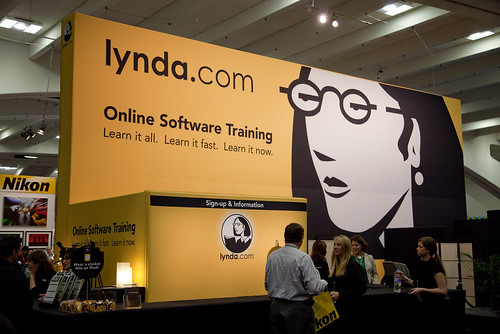The recorded presentations for the Kaltura Video Summit for Enterprise and Education 2013 are now available for on-demand viewing at:
.
The recorded presentations for the Kaltura Video Summit for Enterprise and Education 2013 are now available for on-demand viewing at:
.
The ultimate guide to logo design: 40 pro tips — from creativebloq.com
Technology is eating your job (part 2) — For those who need more convincing — by Michelle Martin
Excerpts:
The reason I’m harping on technology so much is because for most of us, I believe this is a ticking time bomb we are trying to ignore. Most of us want to keep our heads down and just keep working, hoping that we aren’t going to be the ones displaced by a piece of software or some other form of automation.
This will be a mistake. And it will blow up in your face. You need to start thinking now about how to future-proof yourself as much as possible so that you’re more prepared for this breaking wave of technology.
From DSC:
This is truly a troubling subject. I often ask myself the following questions:
Thanks Michelle for the important posting/heads-up!
For some solutions/thoughts here, see Michelle’s posting:
Excerpt:
InDesign FX: How to create a puzzle with InDesign — from blog.lynda.com by Mike Rankin
.
.
Also see:
From DSC:
First of, when I saw the article:
Lynda.com acquires online video training rival Video2brain to boost its international expansion — from thenextweb.com
…it reminded me of taking a class with Lynda Weinman years ago out at SFSU’s Multimedia Studies Program. She relayed a lot of very valuable information in a short time. She knows how to explain things well — using helpful techniques and understandable vocabulary. She struck me as not only a creative person with a heart for teaching and learning, but she surrounds herself with people who also can effectively teach others. Our institution gives a thumbs up to this solid resource and I wish Lynda & all of the other entrepreneurs at Lynda.com all the best.

ASTD TechKnowledge 2013 Conference Backchannel: Curated Resources — from David Kelly
Excerpt:
I am a huge proponent of backchannel learning. There are many conferences I would love to be able to attend, but my budget can only accommodate one or two each year. The backchannel is an excellent resource for learning from a conference or event that you are unable to attend in-person.
Also see David’s posting:
From DSC:
I wonder…are we migrating more towards brands and products/services provided by individuals or smaller teams of people? Consider Ian Byrd’s recent announcement re: Byrdseed.TV.
The power of the business matchmaker — from management.fortune.cnn.com by John Hagel and John Seely Brown
Matchmakers can connect millions of people looking to pair talent with jobs, buyers with vendors, tenants with landlords, etc. The Fortune 500 should take note.
From DSC:
Makes me wonder how many MOOCs will morph into matchmakers…and I continue to wonder if the corporate world will develop/use their own MOOCs and use them as pre-screening/filtering mechanisms…
.
